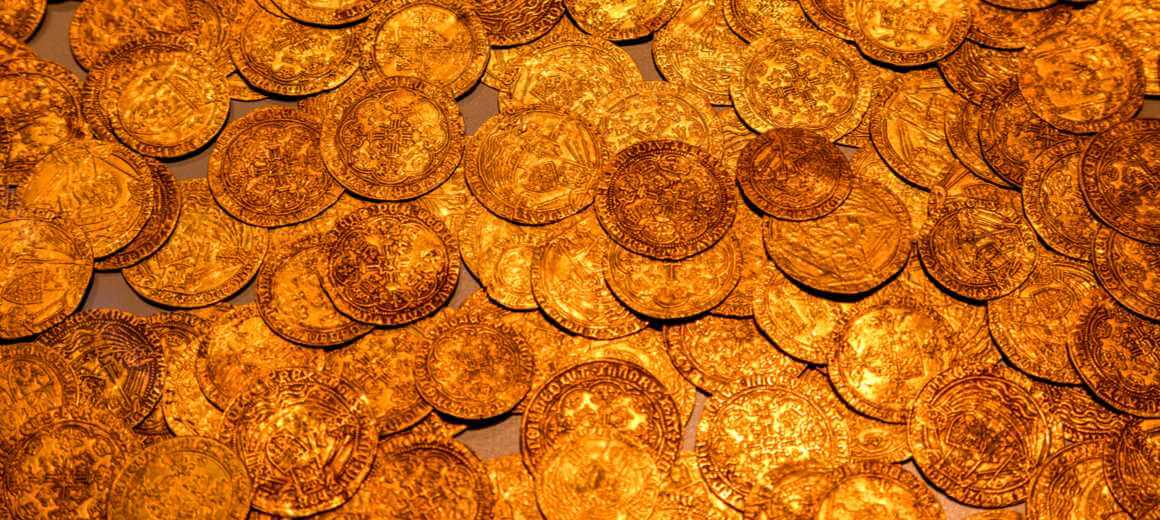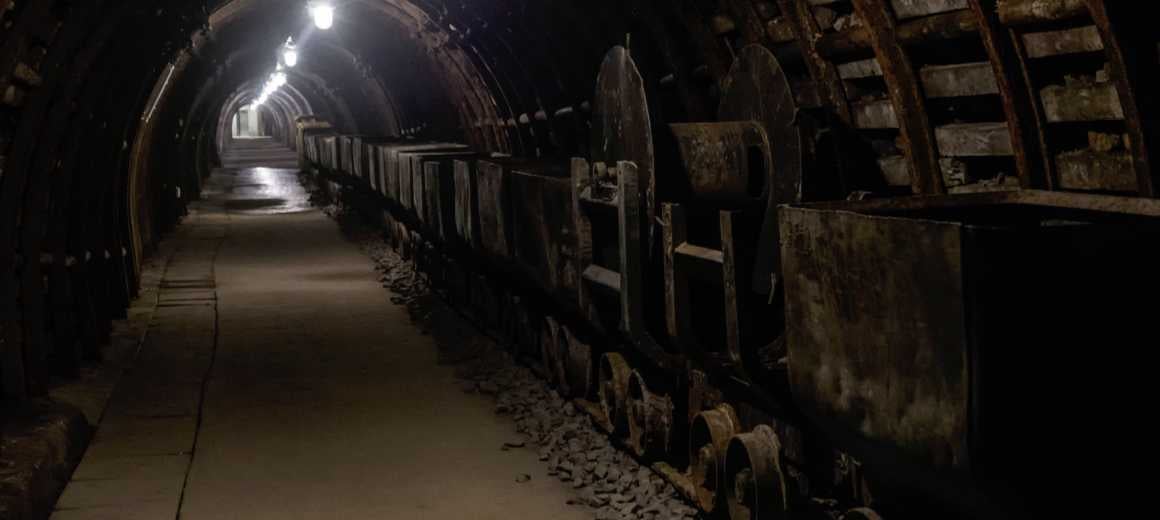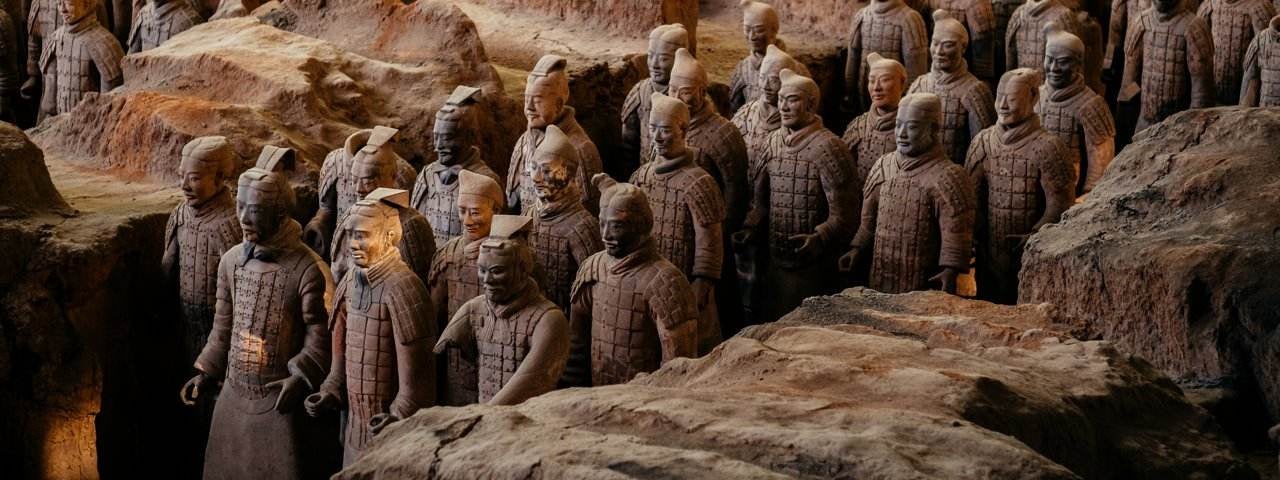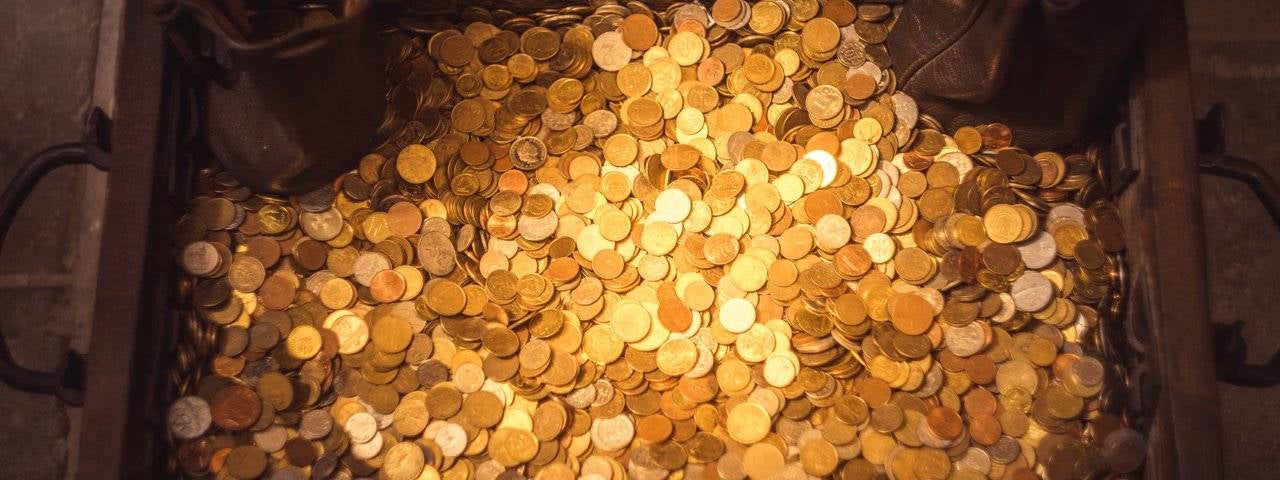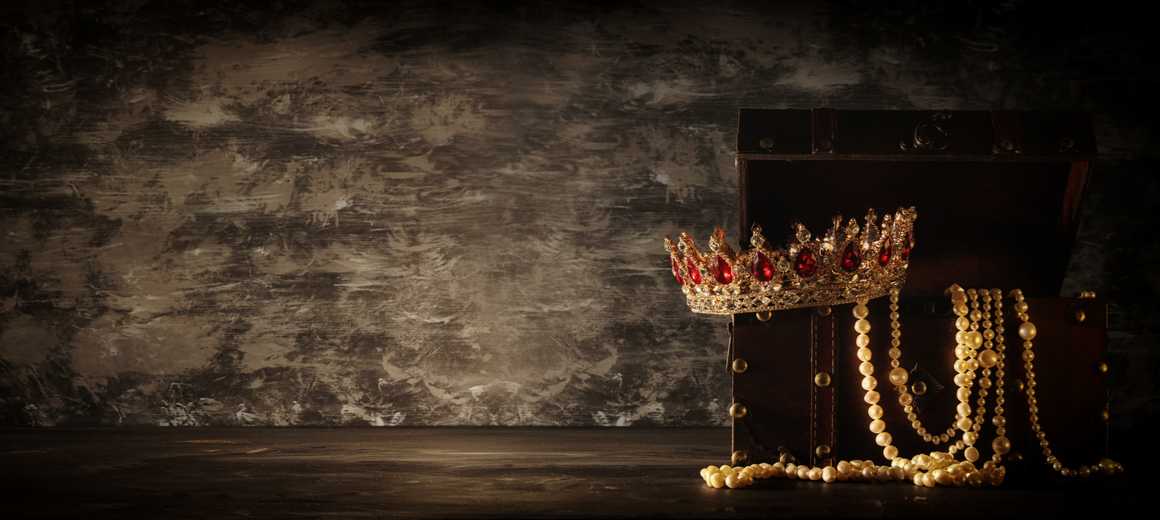Legendary Lost Treasures That Haven’t Been Discovered… Yet
"And some things that should not have been forgotten were lost. History became legend. Legend became myth. And for two and a half thousand years, the ring passed out of all knowledge."
- J.R.R Tolkien, The Lord of the Rings: The Fellowship of the Ring
Of all the tales of mystery and intrigue that history has delivered, none capture the imagination more than stories of real-life treasures that were lost to the ages. Today, the various destinations of this vanished loot present a wealth of treasure-seeking opportunities for the adventurous. From the American Old West and castles of England, to the Aztec temples and sacred kingdoms of Asia, undiscovered treasures await. Even as you cross the Atlantic Ocean in your private jet charter, you could be flying over legendary treasures worth millions.
Join us as we take a look at some of the most valuable treasures that are still out there, waiting to be rediscovered.
The Spanish treasure fleet
Estimated value today: Unknown, but several finds have recently been made, including two to the value of $1 million and $4.5 million
When it went missing: 1715
If you ever visit Vero Beach in Florida and spot a cluster of shimmering dots on the shoreline, don’t be too quick to dismiss them as shells reflecting sunlight. You may just be receiving a generous gift from the ocean in the form of lost artifacts from a 1715 treasure fleet.
This region is known as the Treasure Coast, named after the precious relics from 11 sunken ships that continue to wash ashore. In fact, to date, $175 million of the treasure has been found. One of the largest of these discoveries was when divers found 350 gold coins worth $4.5 million in the Atlantic waters.
The story of this calamity goes all the way back to the early 18th century – a time of sea fare, piracy, and Spain's dominance in the New World. Fleets loaded with treasure often traversed the seas between Spain and America and in July 1715, 12 such ships sailed from Havana, Cuba, to Spain, carrying silver, gold, and gemstones valued at about 14 million pesos.
Their voyage took them into the heart of a fierce hurricane, where the immense waves pulled 11 ships to the depths of the ocean, including the Nuestra Senora de la Regla and Santa Cristo de San Ramón. The only ship to avoid disaster was the French frigate Le Griffon, which didn’t sail close to the coast with the rest of the fleet.
Nearly a thousand lives were lost as well as a considerable amount of the cargo. Even though Spain was able to reclaim 80% of the lost treasure, the rest is still up for grabs as four of the ships are yet to be discovered, and parts of their rich cargo keep turning up on a semi-regular basis.
The Nazi gold train of Walbrzych
Estimated value today: Approximately $200 million (According to the Economic Times article “Nazi train with $200 million worth of treasure discovered.”)
When it went missing: 1945
Of all the castles to visit in Poland, one in particular remains shrouded in more than its fair share of mystery. The majestic 13th-century Ksiaz Castle, the third largest castle in Poland, is rumored to contain underground tunnels that hide a train laden with Nazi gold from the Second World War. It has become known as the Nazi gold train of Walbrzych. This train is rumored to contain a spectacular cargo of riches, including 330 tonnes of gold, jewels, art and, possibly, weapons.
In 2016, the rumors reached a fevered pitch after two men, Andreas Richter and Piotr Koper, claimed that they had located the train using radar. This caused a flurry of excitement, with numerous visitors and amateur treasure hunters flocking to the area in the hope of finding part of the rumored lost treasure. However, authorities soon cordoned off the area and denied them access. Further investigation was done, but no proof of any lost treasure was found.
Andreas Richter and Piotr Koper believed that the treasure was there, but in 2018 Richter lost faith and decided to quit the team and stop searching. Unfortunately for Richter, Koper would soon come across some treasure, although it was not the riches of the train, and it wasn’t found underground either. In 2019 Koper had been hired to assist with the renovation of a palace in the village of Struga when he discovered the first of 24 murals preserved beneath a layer of plaster.
Perhaps luck will once again shine on Koper and guide him to the train filled with untold wealth beneath the Ksiaz Castle.
The Tomb of Qin Shi Huang
Estimated value today: Unknown
When it went missing: Around 200 BCE
What started as an ordinary day in the life of a peasant turned into one of the most astonishing discoveries when Yang Zhifa, digging for water, stumbled upon a terracotta statue on a hilltop near the city of Xi’an, China. Further digging by archaeologists revealed a mausoleum containing a vast army of clay warriors guarding an even more surprising locale, the tomb of China's First Emperor, Qin Shi Huang.
It may sound like the start of a monster movie, but that’s as far as this story goes. Although there are no fears that the archaeologists would accidentally raise an enraged emperor from the dead if they keep digging, some treasures within may remain lost. Only three chambers inside the structure have been explored so far, and it's unlikely that the pick axes will reach the central section of the mausoleum where the emperor lies buried.
Out of respect, the Chinese government may not give permission to excavate the tomb further. Besides, technology is not advanced enough to go that deep without causing damage. What's more, it’s said that poisonous rivers of mercury encircle the emperor's tomb. Qin Shi Huang ordered the construction of a lavish tomb compound that resembles an underground city. When he died, his body and riches were laid to rest and both remain confined within the unexplored depths of the earth.
The Amber Room - The Lost “Eighth Wonder of the World”
Estimated value today: $176 million (According to the My Modern Met article “The mysterious disappearance of the opulent ‘amber room’ in Russia.”)
When it went missing: 1941
Construction on the Amber Room began in 1701, when Prussian King Frederick I commissioned a room in the Charlottenburg Palace in Prussia to be exquisitely gilded. The mysterious demise of this Imperial room took place in 1941, when it ended up in the hands of the German forces during the Soviet Union invasion known as “Operation Barbarossa.” Only a replica of what was once dubbed an “Eighth Wonder of the World” stands in its place today.
A masterpiece of craftsmanship that took more than six years to construct, the Amber Room’s shimmering brilliance of glistening panels, mirrors, gold leaf, and jeweled mosaics was seen as one of the greatest architectural wonders of its time. The Amber Room became a part of the Winter Palace in St. Petersburg in 1716 when it was gifted to Peter the Great and later transferred to Catherine Palace in nearby Tsarskoye Selo in 1755 at the request of his daughter, Empress Elizabeth. Here it was expanded and rebuilt for over 10 years, becoming a 55 square-meter ornament filled with over six tonnes of amber.
Its cultural significance and prized beauty didn’t go unnoticed, even with the arrival of the Nazi forces in the Soviet Union in 1941. Since it was found too delicate and brittle to dismantle, the curators of the palace hid the panels under various materials and wallpaper coverings. But they didn’t succeed in saving it. In less than two days, the Nazis had looted the Amber Room, boxed up the panels and had it moved to Königsberg Castle (now Kaliningrad), where their stolen loot was put on display.
In January 1943, Hitler gave orders for the Amber Room to be dismantled and sent back to Germany. By August of the same year, Allied bombs destroyed Königsberg Castle. Whether the Amber Room was destroyed in the bombing or successfully relocated in time by German forces remains unknown.
Speculation is that sections are hidden in boxes somewhere in the city of Kaliningrad; that the Amber Room panels made their way back to Berlin by secret train or were lost at sea. Another theory is that pieces of it exist all over the world, having been sold by German soldiers, following a claim in 1997 when an “original” panel was put up for sale. Then there’s the idea that Stalin’s “replica” Amber Room was the one looted and the real one (stolen and hidden by Soviet forces) is boxed up somewhere in Russia.
It is unlikely we’ll ever see this original gilded treasure reinstated in its full glory. For now, a replica stands in the Catherine Palace in St. Petersburg, Russia, built in 2003 for its 300th year anniversary.
It’s a legacy of a treasure, once a gift, but lost to the gluttony of war.
The Lost Treasure of the Beale Ciphers
Estimated value today: Approximately $93 million (According to the Northern Virginia article “Is this local buried treasured mystery fact – or just fun?”)
When it went missing: Around 1900
One of the most intriguing lost treasures involves Thomas J. Beale, an American who actually left instructions to a real treasure hunt. The clues are so intricate, however, that nobody has been able to locate the site where Beale and his companion hid their loot.
According to a pamphlet circulated in 1885, Beale and a few other men found a large amount of gold and silver while mining in the Rocky Mountains in the 1820s. They took the treasure to Bedford County where they entrusted Mother Earth with the safekeeping of their newfound riches. The men wanted to ensure their families got a good life insurance policy when they passed away, so Beale wrote three encrypted notes that gave clues to the location of the treasure, its contents, and the names of the 30 partners.
He put them in a box, which he left with a trusted friend, the local innkeeper Robert Morriss. Beale instructed Morriss to open the box if he had not returned from an excursion in 10 years. He never showed up again. 23 years later, Morriss opened the box and immediately attempted to decipher the letters – to no avail. To this day, only the second cryptogram that describes the content of the treasure has been solved.
King John’s Lost Treasure
Estimated value today: $70 million USD
When it went missing: 1216
In October 1216, there was a revolt against King John of England and the country was laid waste by his mercenary soldiers. In the southeast, the French Prince Louis had invaded and controlled all but the castles at Dover, Lincoln, and Windsor. In the north, the Scots King Alexander II had promised fealty to Louis.
An aged and sickly King John marched on the city of Lincoln and reinforced his garrison so that he could punish those who supported Prince Louis. “No one could remember that so great a conflagration had ever before been made in this part of the world in so short a space of time,” one contemporary chronicler wrote of the death, torture and mayhem that ensued. Clearly, however, vengeance had given King John an appetite and on the night of 9th October he feasted royally on “peaches and new cider.”
Unfortunately, he was almost immediately struck down with a bout of severe dysentery. On October 11, he set out once more for Lincoln and crossed The Wash, an area of salt marsh, deep creeks, quicksand, and unpredictable tides where paths could appear and disappear beneath the water with frightening speed. While John managed to cross safely, his baggage train, two miles long and loaded with riches, was not so fortunate.
The monk, Ralph of Coggeshall, wrote of this disaster, “Packhorses and members of the King’s household were sucked into quicksand where the Wellstream meets the sea because they had set out in too much of a hurry and careless of the fact that the tide had not fully receded.” The King’s baggage train had succumbed to the treacherous depths of The Wash and was lost. It had reputedly been carrying the crown jewels, gold coin to pay John’s soldiers, silver and gold plate, holy relics, and the sword of Tristram, one of the Arthurian knights.
John died on October 18, in Newark, and though a search was mounted for the lost treasure, it has never been found. The nature of the landscape, with silt deposits and peat swamps, suggests that it could be buried beneath 20 feet of mud. In the intervening 700 years the Village of Sutton Bridge in Lincolnshire was drained, but no treasure has ever been found.
Organize a private jet hire to take you on an adventure
Whether you want a private jet rental so you can go searching for treasure, or you just need a private jet to get to an important meeting, Air Charter Service is here to help. Our private charter service has been operating for more than 30 years and has helped thousands of people reach their desired destinations all around the globe. We’ve also grown our international network of offices to ensure that we can source the perfect aircraft for you and your journey.
Contact us to find out more about all of our private charter solutions.

 Throughout the centuries, societies from all over the world have gathered vast amounts of wealth only to lose it again or for it to disappear. We take a look at some of the legendary treasures that are waiting to be discovered.
Throughout the centuries, societies from all over the world have gathered vast amounts of wealth only to lose it again or for it to disappear. We take a look at some of the legendary treasures that are waiting to be discovered.


